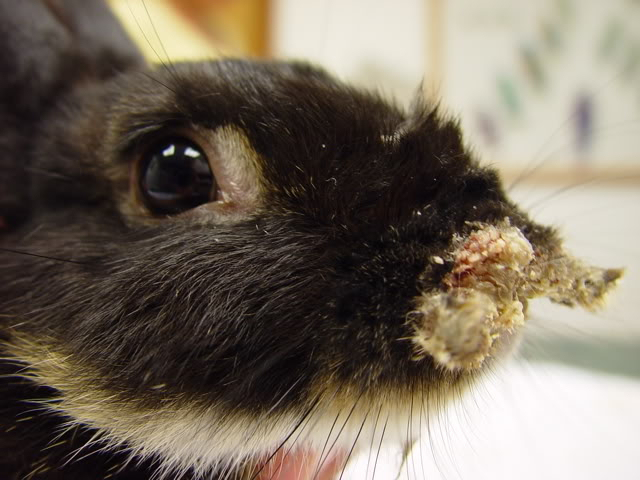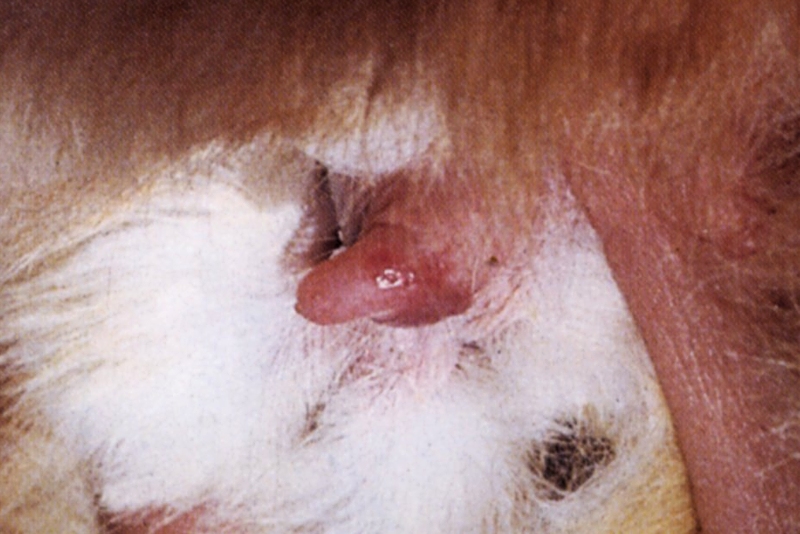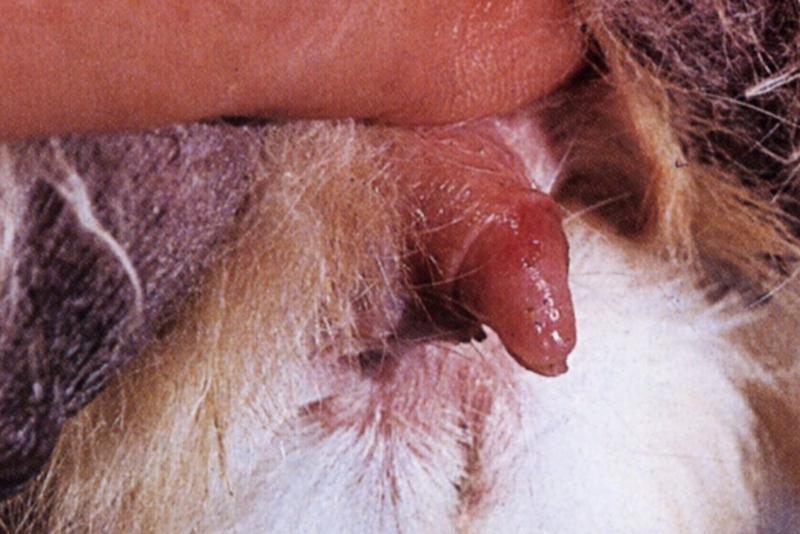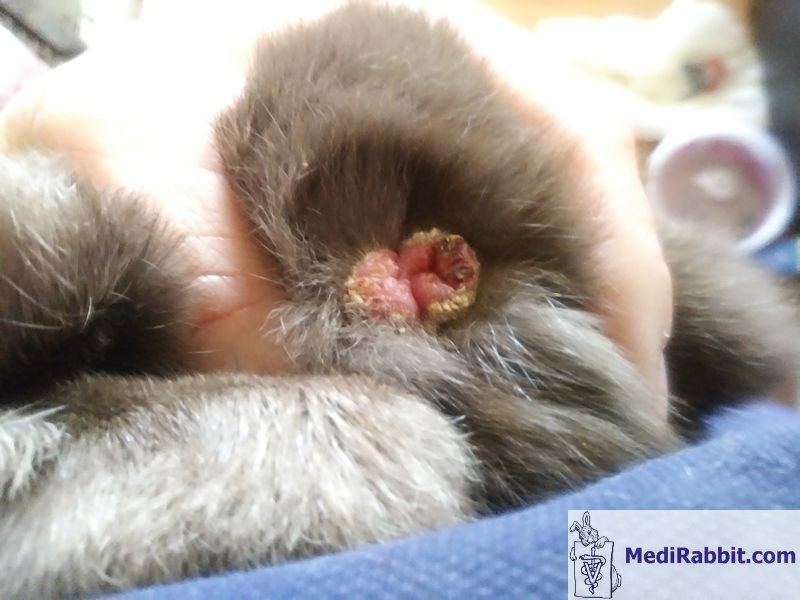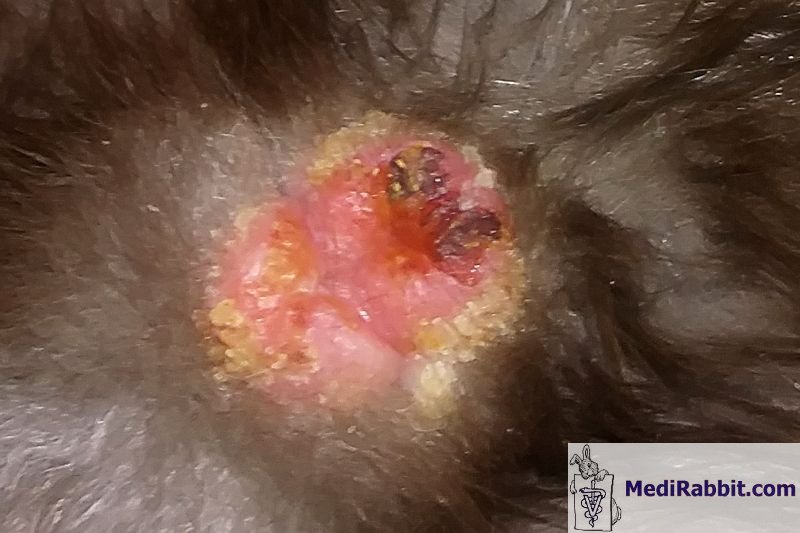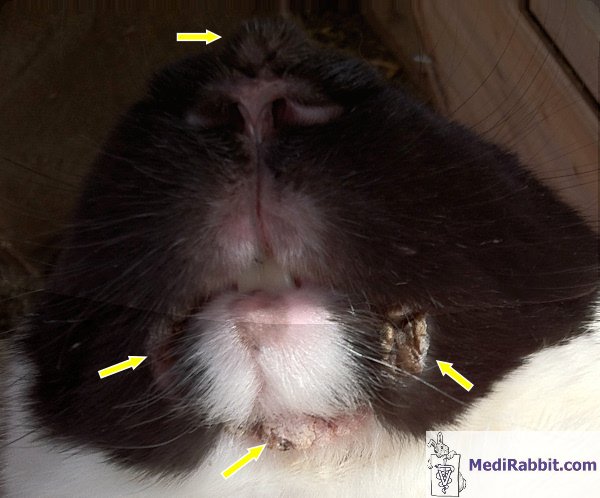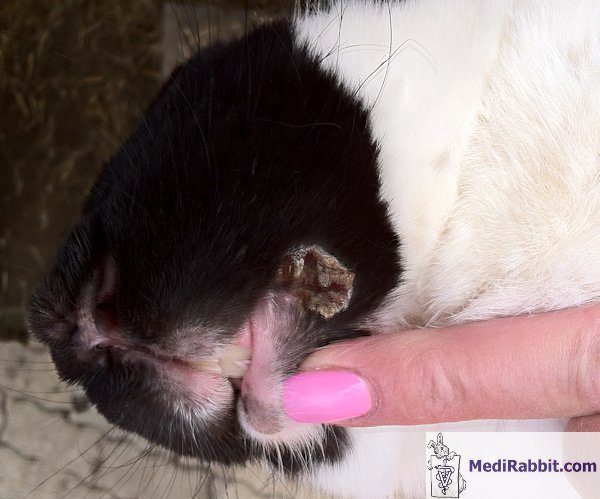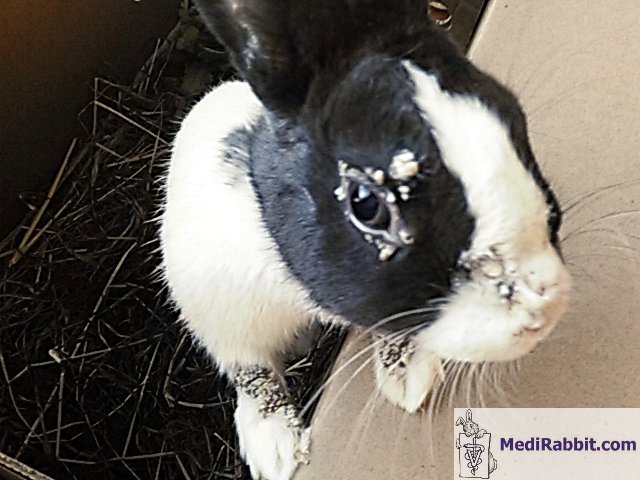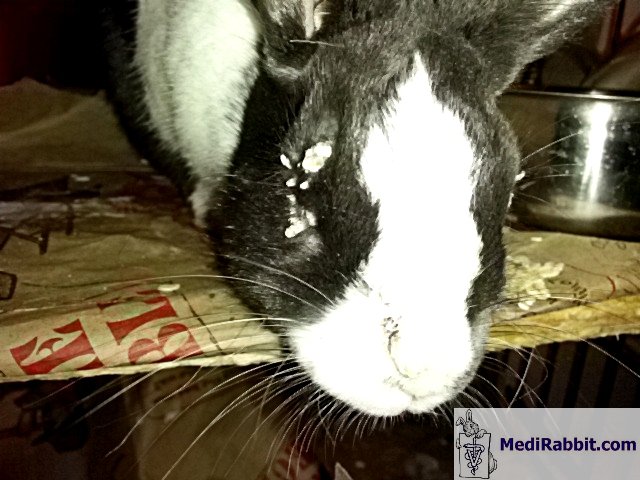Treponematosis
- rabbit syphilis
Esther van Praag, Ph.D.
|
MediRabbit.com is
funded solely by the generosity of donors. Every
donation, no matter what the size, is appreciated and will aid in the continuing
research of medical care and health of rabbits. Thank you |
Warning: this
file contains pictures that may be distressing to some persons
|
Rabbit
syphilis is a bacterial disease caused by the spirochete Treponema
cuniculi. The bacterium is universal and found all over the world. It
infests wild and domestic or pet rabbits. The transmission of the bacterium
is not well understood. It may be ·
Direct, between adult rabbits during mating; ·
Indirect, passed through the milk from an infected
doe to her offspring. Other
modes of transmission cannot be excluded since active syphilis infections
have found in pet rabbits that were living individually, without contact with
other rabbits. Incubation
time for the disease is long, 3 to 16 weeks. Treponema cuniculi can be
dormant for a long period of time. A rabbit can thus remain asymptomatic
during several years. A stressful event or suppression of the immune system
can trigger the onset of the bacterial disease. The
incidence of syphilis in house rabbits is not known, but it is likely more
common than previously thought. The disease is not zoonotic, and
cannot be passed from rabbits to other animals and humans. Clinical
signs The classical form of syphilis affects
the junction between the mucosa and the epithelium of genital organs, the
anus and/or the face, mainly the eyelids and nostrils.
Lesions develop slowly. Large thick
crusts will cover the damaged ulcerated skin. Secretion of a white creamy
exudate bleeding is possible.
Whitney Abrams Breeding doe with a swollen perianal region, covered
with scales and crusts, a typical sign of treponematosis
Whitney Abrams Detail view of the perianal region, here after
treatment with bag balm to soothe the irritated skin The
immune response to the infecting agent is slow. For this reason, the
infection can spread to
the surrounding areas and other
susceptible regions on the body (e.g., from the anus/genitalia to
the face) when left untreated. Lately, an atypical
form of treponematosis has been observed in rabbits. The infection
develops on the face or chin only while the genital and perineal areas remain
unaffected. The infected area will present with crusty lesions. If left
untreated, the infection will increase in size slowly. The skin is raw,
inflamed, with deep ulcerations, and may bleed or exude a white fluid.
Treatment Administration
of the narrow spectrum antibiotic penicillin G (benzathine/procaine: 42.000 -
84.000 UI/kg, SC, IM), 4-6 repeats at intervals of 5 to 7 days, is the treatment
of choice against rabbit syphilis. (Rabbits should NEVER be given penicillin orally; it often leads to
severe diarrhea). Other
antibiotics will not cure the infection. Mostly, healing of the skin lesions
is observed during the treatment, but relapse will occur as soon as the
treatment is stopped as the Treponema cuniculi bacterium is not
killed. This is particularly the case of fluoroquinolone antibiotics.
Clinical signs and skin lesions develop rapidly after the treatment is stopped,
often in a more severe form than before. If the
rabbit is in pain, analgesics
can be administrated (e.g. meloxicam). It is imperative to monitor the rabbit's eating
during the treatment. Indeed, dying bacteria release toxins inside the
rabbit's body and blood circulation and appetite may be affected. Inappetence
can last 2-3 days, but the rabbit usually begins eating again on its own. It
is essential that the antibiotic is not stopped to avoid onset of bacterial
resistance. The rabbit should be encouraged to eat by its own and drink. If
this is not the case, force feeding food with a syringe and subcutaneous
fluid administration is necessary.
Vivian Barna Rescued rabbit that has been diagnozed with
untreated rabbit syphilis. Acknowledgements Many thanks to Ariane Heller (Switzerland), Michel Gruaz (Switzerland), Vivian Barna
(USA) and Whitney Abrams (USA) for their pictures and their permission to use
on this page. References
Baker-Zander SA, Lukehart SA. Antigenic cross-reactivity between Treponema
pallidum and other pathogenic members of the family Spirochaetaceae.
Infect Immun 1984;46:116-121 Bayon H. A new species of Treponema found in the genital
sores of rabbits. Br Med J 1913;ii:1159 Bellangeon M. Tréponématose chez le Lapin de Compagnie PASE 2,
deuxième trimestre 2001. Graves S, Downes
J. Experimental infection of man with rabbit-virulent Treponema paraluis-cuniculi. Br J Vener
Dis 1981;57:7-10. Hougen KH, Birch-Andersen A, Jensen HJ.
Electron microscopy of Treponema cuniculi. Acta
Pathol Microbiol Scand B Microbiol Immunol 1973;81:15-28 Noguchi, H., A note on the venereal spirochetosis of rabbits. A new technique for staining Treponema
pallidum, J. Am. Med. Assn 1921, lxxvii, 2052. Quesenberry KE, Carpenter JW. Ferrets, rabbits and
rodents. Clinical Medicine and Surgery. St Louis, USA: Saunders; 2004 Saito K., Tagawa
M., and Hasegawa A. Rabbit Syphilis Diagnosed Clinically in Household Rabbits
J. Vet. Med. Sci. 65(5): 637-639, 2003 Saito K., Tagawa
M., and Hasegawa A. RPR Test for Serological Survey of Rabbit Syphilis in
Companion Rabbits J. Vet. Med. Sci. 65(7): 797-799, 2003 Saunders RA, Davies RR. Notes of rabbit
internal medicine. Oxford, UK: Blackwell Publishing; 2005 Small JD, Newman B. Venereal spirochetosis
of rabbits (rabbit syphilis) due to Treponema cuniculi: a clinical,
serological, and histopathological study. Lab Anim Sci 1972;22:77-89 |
|||||||||||
e-mail: info@medirabbit.com



